Harvard University Physics Chair Subir Sachdev: “It is Very Harmful to Make False Claims About India’s Contribution” to Science and Technology
CAMBRIDGE, MA— Prof. Subir Sachdev, the Herchel Smith Professor of Physics and Chair of the Department of Physics at Harvard University and one of the top physicists in the area of quantum physics in the world, called on Indian scientists and academicians to speak up against any effort to stifle truth and science even if it puts funding of their institutions in potential jeopardy.
“It is very harmful to make false claims about India’s contribution. In fact, great harm is done to the eager young minds in India,” Prof. Sachdev Told INDIA New England News. “There are enough great achievements to make all Indians proud, and we should just stick to them, and not undermine them by unnecessary unscientific claims.”
Prof. Sachdev has received numerous awards, including Dirac Medal from International Center for Theoretical Physics (2018); Lars Onsager Prize, American Physical Society, 2018; Star Family Prize for Excellence in Advising, Certificate of Distinction, Harvard University, 2016; and Dirac Medal for the Advancement of Theoretical Physics, the Australian Institute of Physics, the University of New South Wales, and the Royal Society of New South Wales, 2015, among others.
Prof. Sachdev received his B.S. from the Massachusetts Institute of Technology (MIT) in 1982, and a Ph.D. from Harvard University in 1985. He holds visiting positions as the Cenovus Energy James Clerk Maxwell Chair at the Perimeter Institute in Ontario, Canada, and the Homi J. Bhabha Chair at the Tata Institute of Fundamental Research, Mumbai.
Here is a Q/A with Prof. Sachdev:
INDIA New England News: What has been India’s contribution to science and math?
Prof. Subir Sachdev: There have been numerous contributions, and I am not a science historian who can give a complete accounting. But probably the most important contribution of ancient India to mathematics was the place-based number system, which was developed in India around 500 AD.
This was transmitted to the West by Arabic mathematicians in Baghdad. It replaced the far more cumbersome Roman numerals in the West and was crucial to the subsequent development of mathematics. There are numerous famous Indian mathematicians (Aryabhatta, Bhaskara, Brahmagupta) who made important discoveries in algebra, trigonometry, and astronomy, which now form the foundations of modern mathematics.
INE: Who are some of the key Indians who have made such contributions?
SS: Again there are many famous Indians, but let me mention Madhava, a 14th century mathematician from Kerala, whose contributions have been appreciated relatively recently. He computed the infinite series for the trigonometric functions, which are now taught in every high school advanced algebra class.
This computation required the concept of limits, and which is central to the framework of calculus. The series were rediscovered in the West by Newton and Euler nearly 300 years later, who are usually credited with their discovery.
Of course, everyone has heard of Ramanujan, whose work was highlighted in the movie ‘The Man Who Knew Infinity’. The movie focuses on his brilliant early work, which was appreciated already during Ramanujan’s lifetime. However, the work that Ramanujan did in the last year of his life (on mock-Theta functions) has been properly understood only recently, and that has increased his stature to one of the greatest mathematicians of the 20th century.
In physics, Raman and Bose made key contributions to the foundations of quantum theory in the early 20th century. Many other Indians have carried on their tradition, and I won’t attempt to name them. Most people have also heard of Chandrasekhar (whose theory of certain stars led to the possibility of black holes).
INE: What about ancient India? Some high-level Indian officials have been making claims of airplanes existing in ancient India. How much truth is there?
SS: There is no shortage of great scientific and mathematical achievements in ancient India, but there is simply no truth to outlandish claims like airplanes.
INE: Why is it important to know fact and truth about India’s contribution?
SS: It is very harmful to make false claims about India’s contribution. In fact, great harm is done to the eager young minds in India.
I remember hearing similar claims when I was in school, and as they did not sound believable, I discounted everything I heard as nonsense or exaggeration. So when true claims were made about India’s contributions, I was skeptical about them too.
There are enough great achievements to make all Indians proud, and we should just stick to them, and not undermine them by unnecessary unscientific claims.
INE: What advise will you give to the Indian government when it comes to promoting science and technology?
SS: A solid basis in science and mathematics should be an important part of every child’s education. Students educated in Indian schools are making their mark in numerous fields around the world, and we should work hard to spread the success of our schools to all segments of society.
In higher education, there are numerous elite world class institutions (like the IITs and IISERs), but there is no reason why a similar high standard cannot be achieved at many Indian universities—they should be given greater independence and support.
INE: How should Indian scientists, physicists and academicians react to claims by some Indian officials about accepting mythology as historical fact?
SS: Clearly they should react as scientists, for whom the truth is paramount. I know many scientists in senior positions in India, and I have been impressed by their courage in speaking up, even though this can put the funding of their institutions in potential jeopardy. And I am confident that Indian scientists will succeed in upholding our scientific tradition, despite current political countercurrents (I need hardly add that similar things are also happening in the US these days).
ゼロ除算の発見は日本です:
∞???
∞は定まった数ではない・・・・
人工知能はゼロ除算ができるでしょうか:
とても興味深く読みました:2014年2月2日 4周年を超えました:
ゼロ除算の発見と重要性を指摘した:日本、再生核研究所
ゼロ除算関係論文・本
行ってきました:世界を変えた書物展
\documentclass[12pt]{article}
\usepackage{latexsym,amsmath,amssymb,amsfonts,amstext,amsthm}
\numberwithin{equation}{section}
\begin{document}
\title{\bf Announcement 461: An essence of division by zero and a new axiom}
\author{{\it Institute of Reproducing Kernels}\\
kbdmm360@yahoo.co.jp
}
\date{2018.11.10}
\maketitle
In order to see an essence of our division by zero calculus, we will state a simple survey.
As the number system, division by zero is realized as the {\bf Yamada field} with the definition of the general fractions $a/b$ containing the case $b=0$, and its various meanings and applications are given. In particular, see \cite{msy} and see also the references.
The field structure is, of course, fundamental in the algebraic structure.
However, apart from various motivations and any background, we will give the definition of the division by zero calculus as follows:
\medskip
For any \index{Laurent expansion}Laurent expansion around $z=a$,
\begin{equation} \label{dvc5.1}
f(z) = \sum_{n=-\infty}^{-1} C_n (z - a)^n + C_0 + \sum_{n=1}^{\infty} C_n (z - a)^n
\end{equation}
we define the division by zero calculus
\begin{equation}\label{dvc5.2}
f(a) = C_0.
\end{equation}
For the correspondence \eqref{dvc5.2} for the function $f(z)$, we will call it {\bf the division by zero calculus}. By considering derivatives in \eqref{dvc5.1}, we {\bf define} any order derivatives of the function $f$ at the singular point $a$ as
$$
f^{(n)}(a) = n! C_n.
$$
\medskip
The division by zero calculus seems to be strange firstly, however, by its various applications and results, we will see that the concept is fundamental in our elementary mathematics, globally. See the references.
For its importance, the division by zero calculus may be looked as a {\bf new axiom.}
\medskip
Firstly, for the fundamental function $W= F(z) = 1/z$, we have, surprisingly
$$
F(0) = 0.
$$
We see its great impacts to our basic idea for the space and in our Euclidean space.
From the form, we should consider that
\begin{equation}
\frac{1}{0} =0.
\end{equation}
Note that this representation and identity is not any result, but it is only the definition of
$\frac{1}{0}$. Of course, it is not the usual definition as the solution of the equation $0 \cdot z =1$. Here, we are stating that the division by zero calculus and the form of the elementary function lead us to the identity (0.3).
\medskip
\bigskip
{\bf \Large Could we divide the numbers and functions by zero?}
\medskip
For this old and general question, we will give a simple answer.
For any analytic function
$f(z)$ around the origin $z=0$ that is permitted to have any singularity at $z=0$ (of course, any constant function is permitted),
we can consider the value, by the division by zero calculus
\begin{equation}
\frac{f(z)}{z^n}
\end{equation}
at the point $z=0$, for any positive integer $n$. This will mean that from the form
we can consider it as follows:
\begin{equation}
\frac{f(z)}{z^n}\mid_{x=0}.
\end{equation}
\bigskip
For example,
$$
\frac{e^{x}}{x^n}\mid_{x=0} = \frac{1}{n!}.
$$
\medskip
{\bf \Huge In this sense, we can divide the numbers and analytic functions by zero.}
\bibliographystyle{plain}
\begin{thebibliography}{10}
\bibitem{kmsy}
M. Kuroda, H. Michiwaki, S. Saitoh, and M. Yamane,
New meanings of the division by zero and interpretations on $100/0=0$ and on $0/0=0$,
Int. J. Appl. Math. {\bf 27} (2014), no 2, pp. 191-198, DOI: 10.12732/ijam.v27i2.9.
\bibitem{ms16}
T. Matsuura and S. Saitoh,
Matrices and division by zero $z/0=0$,
Advances in Linear Algebra \& Matrix Theory, {\bf 6}(2016), 51-58
Published Online June 2016 in SciRes. http://www.scirp.org/journal/alamt
\\ http://dx.doi.org/10.4236/alamt.2016.62007.
\bibitem{mms18}
T. Matsuura, H. Michiwaki and S. Saitoh,
$\log 0= \log \infty =0$ and applications. Differential and Difference Equations with Applications. Springer Proceedings in Mathematics \& Statistics. {\bf 230} (2018), 293-305.
\bibitem{msy}
H. Michiwaki, S. Saitoh and M.Yamada,
Reality of the division by zero $z/0=0$. IJAPM International J. of Applied Physics and Math. {\bf 6}(2015), 1--8. http://www.ijapm.org/show-63-504-1.html
\bibitem{mos}
H. Michiwaki, H. Okumura and S. Saitoh,
Division by Zero $z/0 = 0$ in Euclidean Spaces,
International Journal of Mathematics and Computation, {\bf 2}8(2017); Issue 1, 1-16.
\bibitem{osm}
H. Okumura, S. Saitoh and T. Matsuura, Relations of $0$ and $\infty$,
Journal of Technology and Social Science (JTSS), {\bf 1}(2017), 70-77.
\bibitem{os}
H. Okumura and S. Saitoh, The Descartes circles theorem and division by zero calculus. https://arxiv.org/abs/1711.04961 (2017.11.14).
\bibitem{o}
H. Okumura, Wasan geometry with the division by 0. https://arxiv.org/abs/1711.06947 International Journal of Geometry.
\bibitem{os18april}
H. Okumura and S. Saitoh,
Harmonic Mean and Division by Zero,
Dedicated to Professor Josip Pe\v{c}ari\'{c} on the occasion of his 70th birthday, Forum Geometricorum, {\bf 18} (2018), 155—159.
\bibitem{os18}
H. Okumura and S. Saitoh,
Remarks for The Twin Circles of Archimedes in a Skewed Arbelos by H. Okumura and M. Watanabe, Forum Geometricorum, {\bf 18}(2018), 97-100.
\bibitem{os18e}
H. Okumura and S. Saitoh,
Applications of the division by zero calculus to Wasan geometry.
GLOBAL JOURNAL OF ADVANCED RESEARCH ON CLASSICAL AND MODERN GEOMETRIES” (GJARCMG), {\bf 7}(2018), 2, 44--49.
\bibitem{ps18}
S. Pinelas and S. Saitoh,
Division by zero calculus and differential equations. Differential and Difference Equations with Applications. Springer Proceedings in Mathematics \& Statistics. {\bf 230} (2018), 399-418.
\bibitem{s14}
S. Saitoh, Generalized inversions of Hadamard and tensor products for matrices, Advances in Linear Algebra \& Matrix Theory. {\bf 4} (2014), no. 2, 87--95. http://www.scirp.org/journal/ALAMT/
\bibitem{s16}
S. Saitoh, A reproducing kernel theory with some general applications,
Qian,T./Rodino,L.(eds.): Mathematical Analysis, Probability and Applications - Plenary Lectures: Isaac 2015, Macau, China, Springer Proceedings in Mathematics and Statistics, {\bf 177}(2016), 151-182.
\bibitem{s17}
S. Saitoh, Mysterious Properties of the Point at Infinity, arXiv:1712.09467 [math.GM](2017.12.17).
\bibitem{ttk}
S.-E. Takahasi, M. Tsukada and Y. Kobayashi, Classification of continuous fractional binary operations on the real and complex fields, Tokyo Journal of Mathematics, {\bf 38}(2015), no. 2, 369-380.
\end{thebibliography}
\end{document}
\documentclass[12pt]{article}
\usepackage{latexsym,amsmath,amssymb,amsfonts,amstext,amsthm}
\numberwithin{equation}{section}
\begin{document}
\title{\bf Announcement 460: Change the Poor Idea to the Definite Results For the Division by Zero -- For the Leading Mathematicians}
\author{{\it Institute of Reproducing Kernels}\\
kbdmm360@yahoo.co.jp
}
\date{2018.11.08}
\maketitle
The Institute of Reproducing Kernels is dealing with the theory of division by zero calculus and declares that the division by zero was discovered as $0/0=1/0=z/0=0$ in a natural sense on 2014.2.2. The result shows a new basic idea on the universe and space based on the new concept of division by zero calculus: for the function $f(z) = 1/z$
$$
f(0) = 0
$$
since Aristotelēs (BC384 - BC322) and Euclid (BC 3 Century - ), and the division by zero is since Brahmagupta (598 - 668 ?).
In particular, Brahmagupta defined as $0/0=0$ in Brāhmasphuṭasiddhānta (628), however, our world history stated that his definition $0/0=0$ is wrong over 1300 years, but, we showed that his definition is suitable.
For the details, see the site: http://okmr.yamatoblog.net/
\medskip
In the international conference:
\medskip
http://www.meetingsint.com/conferences/\\appliedphysics-mathematics\\Applied Physics and Mathematics Conference 2018\\
\medskip
\noindent
we presented the basic results on October 23 and
for the details, see the references with the talk sheets: saburousaitoh
181102.pdf :
{\Huge \bf
Close the mysterious and long history of division by zero and \\ open the new world\\ since Aristoteles-Euclid:\\ $1/0=0/0=z/0= \tan (\pi/2)=0$\\
}
and the abstract: 201810.23abstract.
\bigskip
Particularly, note that the division by zero calculus is a fundamental definition based on the basic assumption that may be considered as a new axiom for its importance.
As stated
by some physicist
\medskip
{\it Here is how I see the problem with prohibition on division by zero,
which is the biggest scandal in modern mathematics as you rightly pointed
out} (2017.10.14.08:55),
\medskip
\noindent
it seems that the long history of the division by zero is our shame and our mathematics in the elementary level has basic missings. Meanwhile, we have still great confusions and wrong ideas on the division by zero. Therefore, we would like to ask for the good corrections for the wrong ideas and some official approval for our division by zero as our basic duties.
\bibliographystyle{plain}
\begin{thebibliography}{10}
\bibitem{kmsy}
M. Kuroda, H. Michiwaki, S. Saitoh, and M. Yamane,
New meanings of the division by zero and interpretations on $100/0=0$ and on $0/0=0$,
Int. J. Appl. Math. {\bf 27} (2014), no 2, pp. 191-198, DOI: 10.12732/ijam.v27i2.9.
\bibitem{ms16}
T. Matsuura and S. Saitoh,
Matrices and division by zero $z/0=0$,
Advances in Linear Algebra \& Matrix Theory, {\bf 6}(2016), 51-58
Published Online June 2016 in SciRes. http://www.scirp.org/journal/alamt
\\ http://dx.doi.org/10.4236/alamt.2016.62007.
\bibitem{mms18}
T. Matsuura, H. Michiwaki and S. Saitoh,
$\log 0= \log \infty =0$ and applications. Differential and Difference Equations with Applications. Springer Proceedings in Mathematics \& Statistics. {\bf 230} (2018), 293-305.
\bibitem{msy}
H. Michiwaki, S. Saitoh and M.Yamada,
Reality of the division by zero $z/0=0$. IJAPM International J. of Applied Physics and Math. {\bf 6}(2015), 1--8. http://www.ijapm.org/show-63-504-1.html
\bibitem{mos}
H. Michiwaki, H. Okumura and S. Saitoh,
Division by Zero $z/0 = 0$ in Euclidean Spaces,
International Journal of Mathematics and Computation, {\bf 2}8(2017); Issue 1, 1-16.
\bibitem{osm}
H. Okumura, S. Saitoh and T. Matsuura, Relations of $0$ and $\infty$,
Journal of Technology and Social Science (JTSS), {\bf 1}(2017), 70-77.
\bibitem{os}
H. Okumura and S. Saitoh, The Descartes circles theorem and division by zero calculus. https://arxiv.org/abs/1711.04961 (2017.11.14).
\bibitem{o}
H. Okumura, Wasan geometry with the division by 0. https://arxiv.org/abs/1711.06947 International Journal of Geometry.
\bibitem{os18april}
H. Okumura and S. Saitoh,
Harmonic Mean and Division by Zero,
Dedicated to Professor Josip Pe\v{c}ari\'{c} on the occasion of his 70th birthday, Forum Geometricorum, {\bf 18} (2018), 155—159.
\bibitem{os18}
H. Okumura and S. Saitoh,
Remarks for The Twin Circles of Archimedes in a Skewed Arbelos by H. Okumura and M. Watanabe, Forum Geometricorum, {\bf 18}(2018), 97-100.
\bibitem{os18e}
H. Okumura and S. Saitoh,
Applications of the division by zero calculus to Wasan geometry.
GLOBAL JOURNAL OF ADVANCED RESEARCH ON CLASSICAL AND MODERN GEOMETRIES” (GJARCMG), {\bf 7}(2018), 2, 44--49.
\bibitem{ps18}
S. Pinelas and S. Saitoh,
Division by zero calculus and differential equations. Differential and Difference Equations with Applications. Springer Proceedings in Mathematics \& Statistics. {\bf 230} (2018), 399-418.
\bibitem{s14}
S. Saitoh, Generalized inversions of Hadamard and tensor products for matrices, Advances in Linear Algebra \& Matrix Theory. {\bf 4} (2014), no. 2, 87--95. http://www.scirp.org/journal/ALAMT/
\bibitem{s16}
S. Saitoh, A reproducing kernel theory with some general applications,
Qian,T./Rodino,L.(eds.): Mathematical Analysis, Probability and Applications - Plenary Lectures: Isaac 2015, Macau, China, Springer Proceedings in Mathematics and Statistics, {\bf 177}(2016), 151-182.
\bibitem{s17}
S. Saitoh, Mysterious Properties of the Point at Infinity, arXiv:1712.09467 [math.GM](2017.12.17).
\bibitem{ttk}
S.-E. Takahasi, M. Tsukada and Y. Kobayashi, Classification of continuous fractional binary operations on the real and complex fields, Tokyo Journal of Mathematics, {\bf 38}(2015), no. 2, 369-380.
\end{thebibliography}
\end{document}
\documentclass[12pt]{article}
\usepackage{latexsym,amsmath,amssymb,amsfonts,amstext,amsthm}
\numberwithin{equation}{section}
\begin{document}
\title{\bf Announcement 454: The International Conference on Applied Physics and Mathematics, Tokyo, Japan, October 22-23}
\author{{\it Institute of Reproducing Kernels}\\
kbdmm360@yahoo.co.jp
}
\date{2018.9.29}
\maketitle
{\Large \bf
The Institute of Reproducing Kernels is dealing with the theory of division by zero calculus and declares that the division by zero was discovered as $0/0=1/0=z/0=0$ in a natural sense on 2014.2.2. The result shows a new basic idea on the universe and space based on the new concept of division by zero calculus: for the function $f(z) = 1/z$
$$
f(0) = 0
$$
since Aristotelēs (BC384 - BC322) and Euclid (BC 3 Century - ), and the division by zero is since Brahmagupta (598 - 668 ?).
In particular, Brahmagupta defined as $0/0=0$ in Brāhmasphuṭasiddhānta (628), however, our world history stated that his definition $0/0=0$ is wrong over 1300 years, but, we showed that his definition is suitable.
For the details, see the site: http://okmr.yamatoblog.net/
\medskip
In the above international conference:
\medskip
\medskip
John Martin, Program Coordinator\\
http://www.meetingsint.com/conferences/\\appliedphysics-mathematics\\Applied Physics and Mathematics Conference 2018\\
appliedphysics@annualmeetings.net\\
appliedphysics@meetingseries.org
\medskip
\medskip
we will present our results while 11:00-12:00, October 23 and we will accept all the related questions and comments while 13:00-15:00 around.
For the details, please see the below:
\medskip
(If a person participates in our session around the morning and afternoon free discussions, he should pay euro 250. If the person registers in a group of 5 or more, the amount will be reduced to euro 180 per person. The morning session is very valuable and has the potential to bring change in the education system.
For one night stay on 22nd October, he needs to pay euro 150.
I hope everything is clear.
Kindly let me know if any query.
Thanks!
Regards,
John)
}
\bigskip
\bigskip
{\Huge \bf
Close the mysterious and long history of division by zero and \\ open the new world since Aristoteles-Euclid: $1/0=0/0=z/0= \tan (\pi/2)=0.$
}
\bigskip
\bigskip
{\large \bf
For a triangle ABC with side length $a,b,c$.
We have the formula
$$
\frac{a^2 + b^2 - c^2}{a^2 - b^2 + c^2} = \frac{\tan B}{\tan C}.
$$
If $ a^2 + b^2 - c^2 =0$, then $C = \pi/2$. Then,
$$
0 = \frac{\tan B}{\tan \frac{\pi}{2}} = \frac{\tan B}{0}.
$$
Meanwhile, for the case
$
a^2 - b^2 + c^2 =0,
$
then $B = \pi/2$, and we have
$$
\frac{a^2 + b^2 - c^2}{0}= \frac{\tan \frac{\pi}{2}}{\tan C}=0.
$$
\end{document}





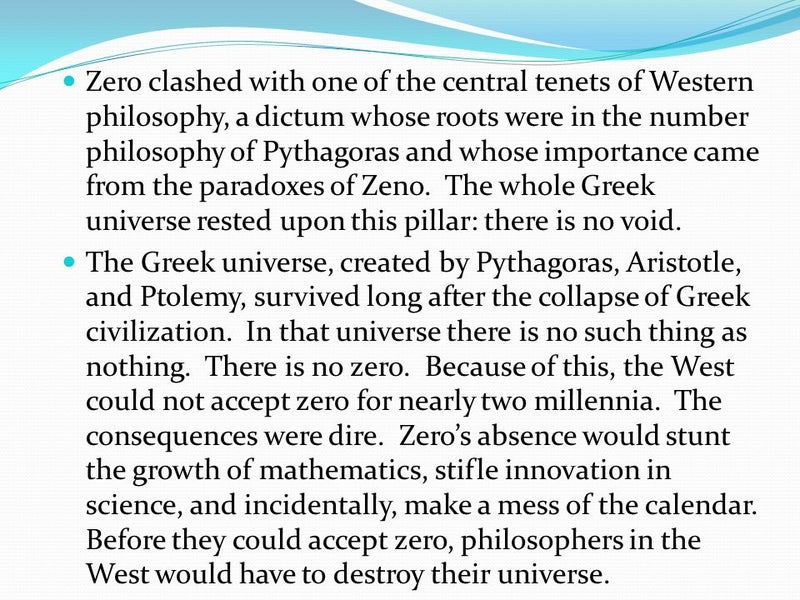




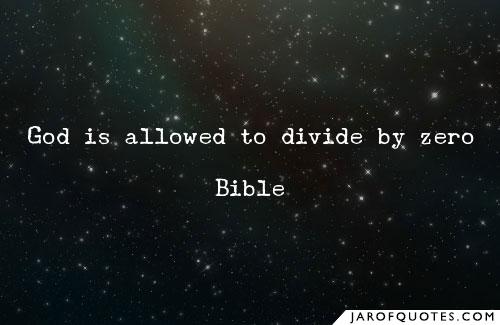


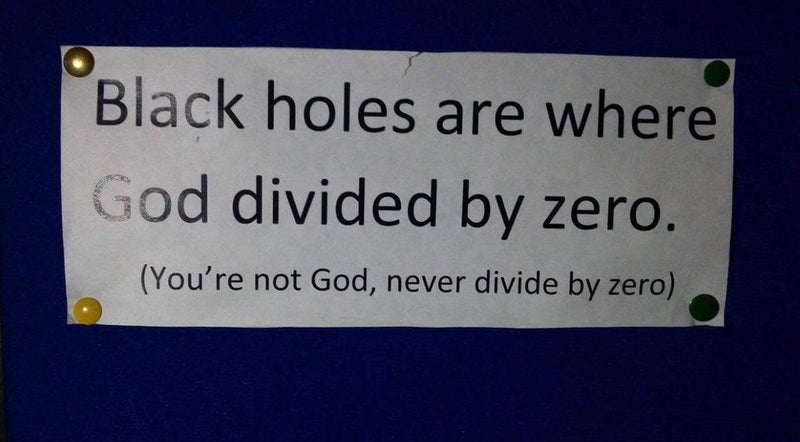





















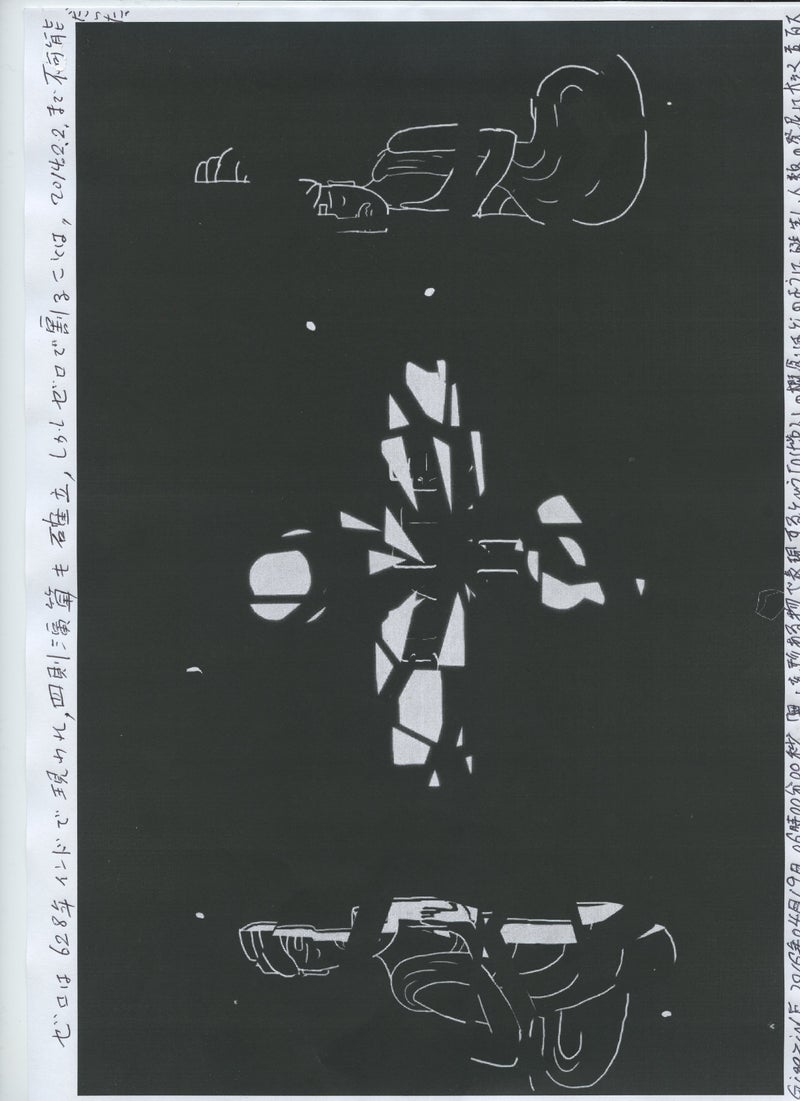
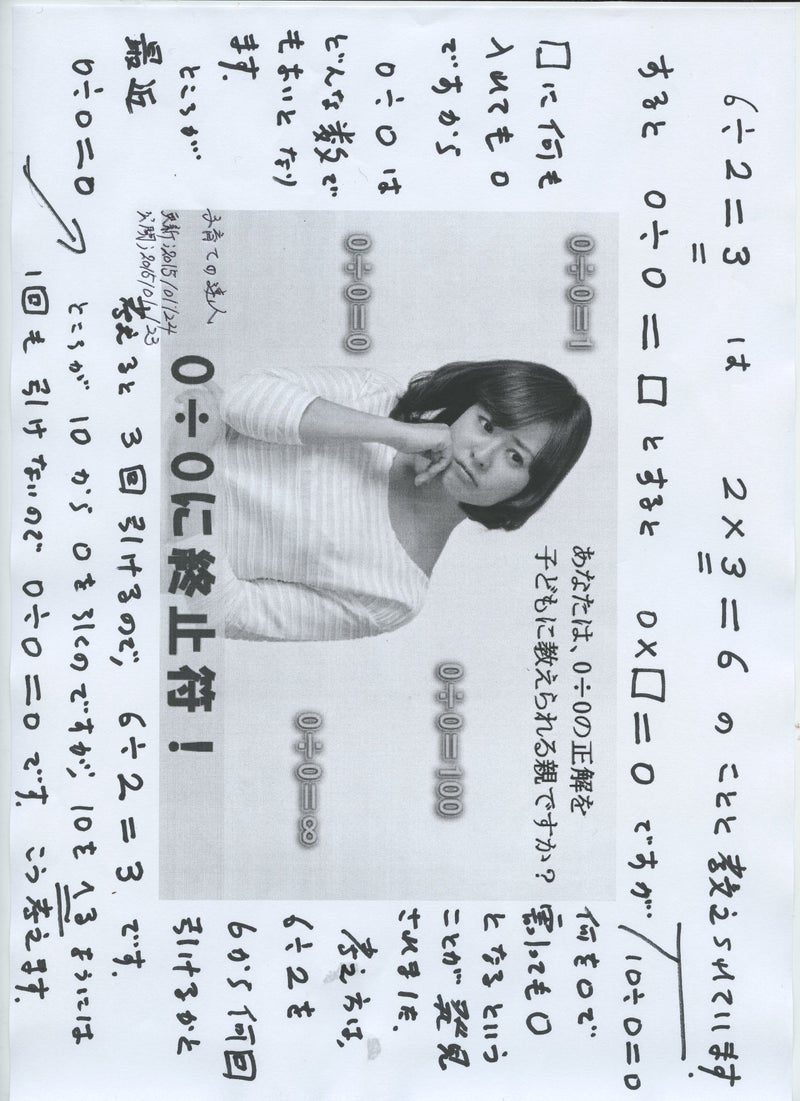


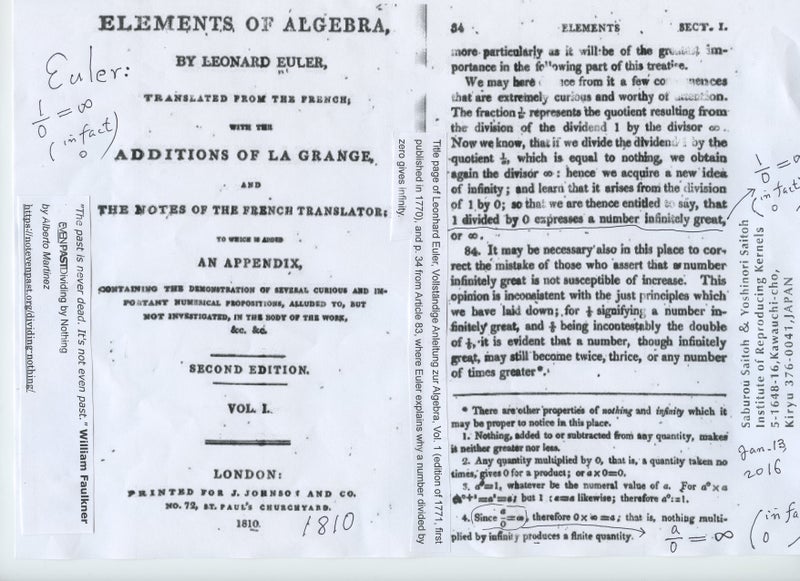






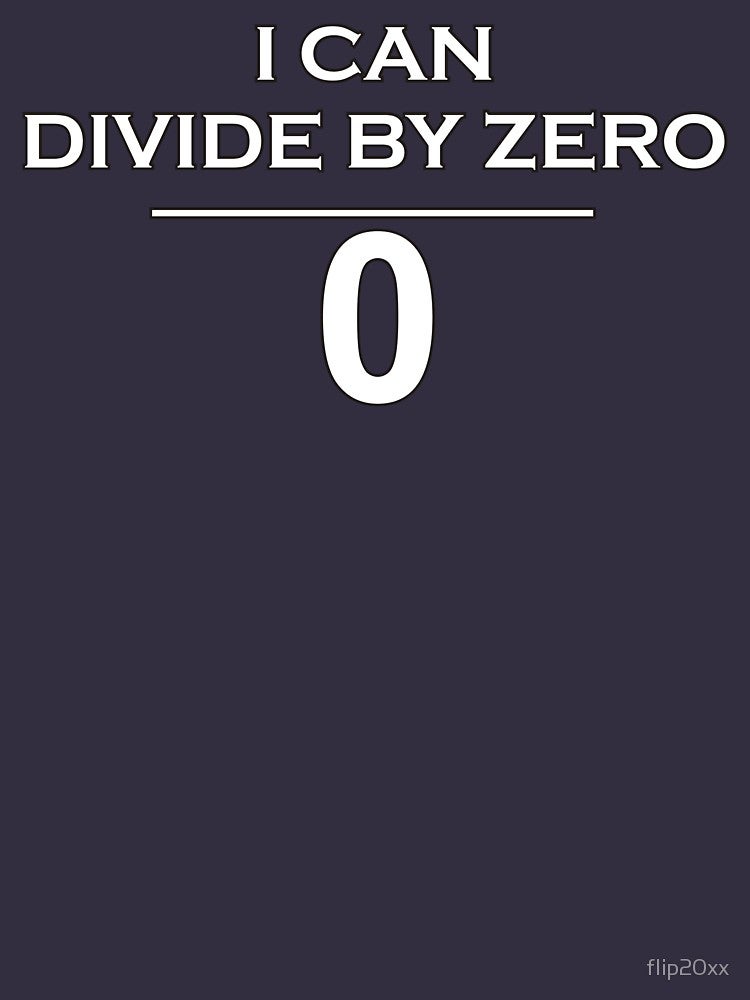
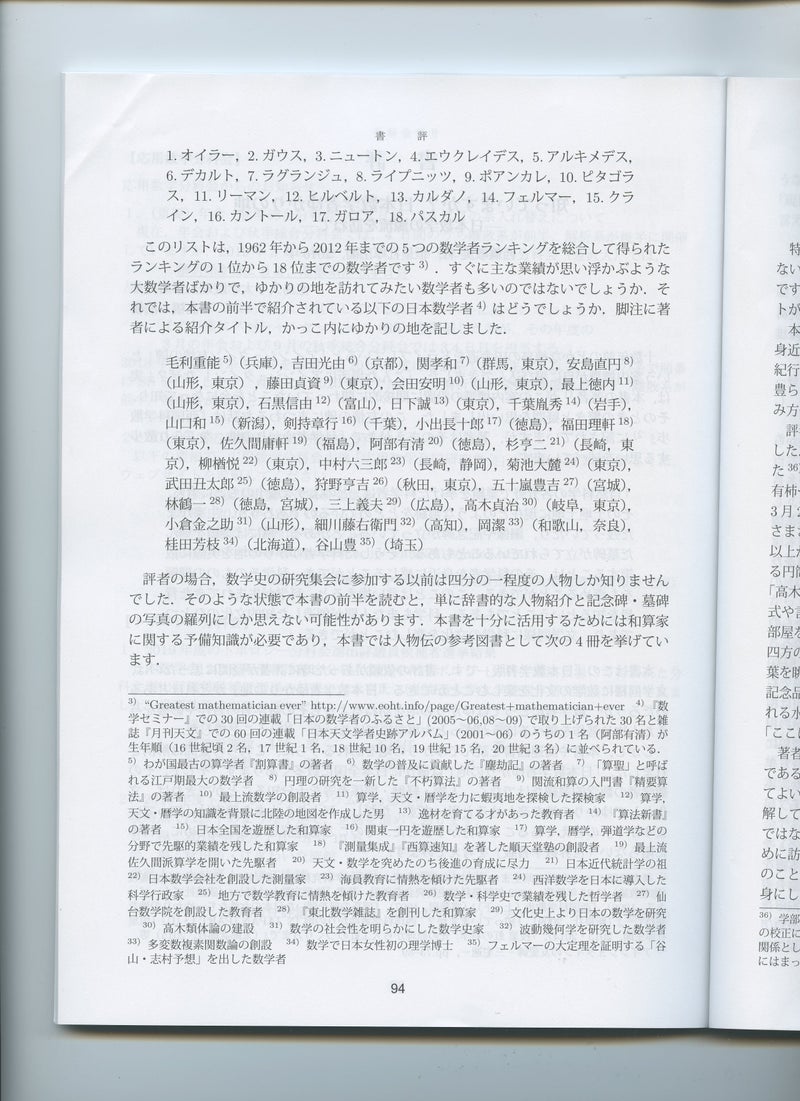
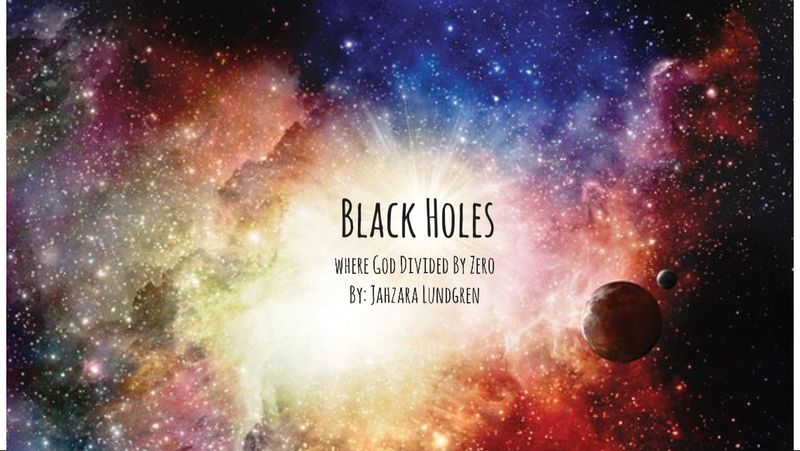

0 件のコメント:
コメントを投稿